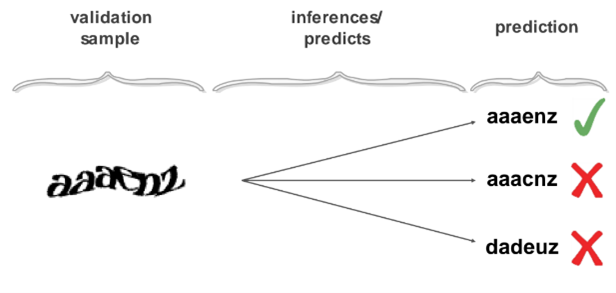MEMECAHKAN CAPTCHA-TEXT TERDISTORSI DENGAN CONVOLUTIONAL NEURAL NETWORK
DOI:
https://doi.org/10.51401/jinteks.v6i1.3801Keywords:
CAPTCHA, software security, CNN, deep learning, machine learningAbstract
At the early stage of the development, CAPTCHA-text used distorted which difficult to solve by OCR technology. The development of AI technology, machine learning and image processing year after year makes the task to distinguish between human interaction and "bot" becomes more challenging. Recently, more advanced CAPTCHA types are available to avoid the risk of using CAPTCHA-text that can be considered irrelevant anymore to secure a website. However, until now can be found some websites that still use CAPTCHA-text. This paper contains the experimental results of developing an intelligent "bots" (using AI techniques) to solve the distorted text CAPTCHA. The Convolutional Neural Network was chosen as an approach for this study because its performance has proved excellent for object recognition applications. The CNN architecture used for this research consists of three convolutional layers, three pooling layers and two fully-connected layers. From the results of experiments conducted, the system managed to achieve a level of accuracy of 75% in ± 29 hours of program execution.
References
Von Ahn, L., Blum, M., Hopper, N. J., & Langford, J. (2003). CAPTCHA: Using Hard AI Problems for Security. In E. Biham (Ed.), Advances in Cryptology --- EUROCRYPT 2003 (pp. 294–311). Springer Berlin Heidelberg.
Lillibridge, M., Abadi, M., Bharat, K., & Broder, A. (2001). Method for selectively restricting access to computer systems. [US Patent No. 6,195,698].
Brown, S. S., DiBari, N., & Bhatia, S. (2017). I Am 'Totally' Human: Bypassing the reCaptcha. In: 13th International Conference on Signal-Image Technology & Internet-Based Systems (SITIS), pp. 9-12.
Chollet, F. (2018). Deep Learning with Python [Online]. Manning Publications. Available: https://www.manning.com/books/deep-learning-with-python. [Accessed 25 January 2024]
LeCun, Y., Bengio, Y., & Hinton, G. (2015). Deep learning. Nature, 521(7553), 436-444. doi:10.1038/nature14539
Sharma, S., & Seth, N. (2015). Survey of Text CAPTCHA Techniques and Attacks. International Journal of Engineering Trends and Technology (IJETT), 22(6), 240–245.
Athiwaratkun, B., & Kang, K. (2015). Feature Representation in Convolutional Neural Networks. CoRR, abs/1507.02313.
Krizhevsky, A., Sutskever, I., & Hinton, G. E. (2012). ImageNet Classification with Deep Convolutional Neural Networks. In F. Pereira, C.J.C. Burges, L. Bottou, & K.Q. Weinberger (Eds.), Advances in Neural Information Processing Systems 25 (pp. 1097–1105)
Sermanet, P., Eigen, D., Zhang, X., Mathieu, M., Fergus, R., & LeCun, Y. (2013). OverFeat: Integrated Recognition, Localization and Detection using Convolutional Networks. CoRR, abs/1312.6229
Szegedy, C., Liu, W., Jia, Y., Sermanet, P., Reed, S.E., Anguelov, D., Erhan, D., Vanhoucke, V., & Rabinovich, A. (2014). Going Deeper with Convolutions. CoRR, abs/1409.4842
He, K., Zhang, X., Ren, S., & Sun, J. (2015). Delving Deep into Rectifiers: Surpassing Human-Level Performance on ImageNet Classification. CoRR, abs/1502.01852
Stark, F., Hazirbas, C., Triebel, R., & Cremers, D. (2015). Captcha recognition with active deep learning. In GCPR Workshop on New Challenges in Neural Computation.
Azad, S., & Jain, K. (2013). CAPTCHA: Attacks and Weaknesses against OCR Technology, 13(3).

Published
How to Cite
Issue
Section
Copyright (c) 2024 Muhammad Akbar Yasin

This work is licensed under a Creative Commons Attribution 4.0 International License.
















